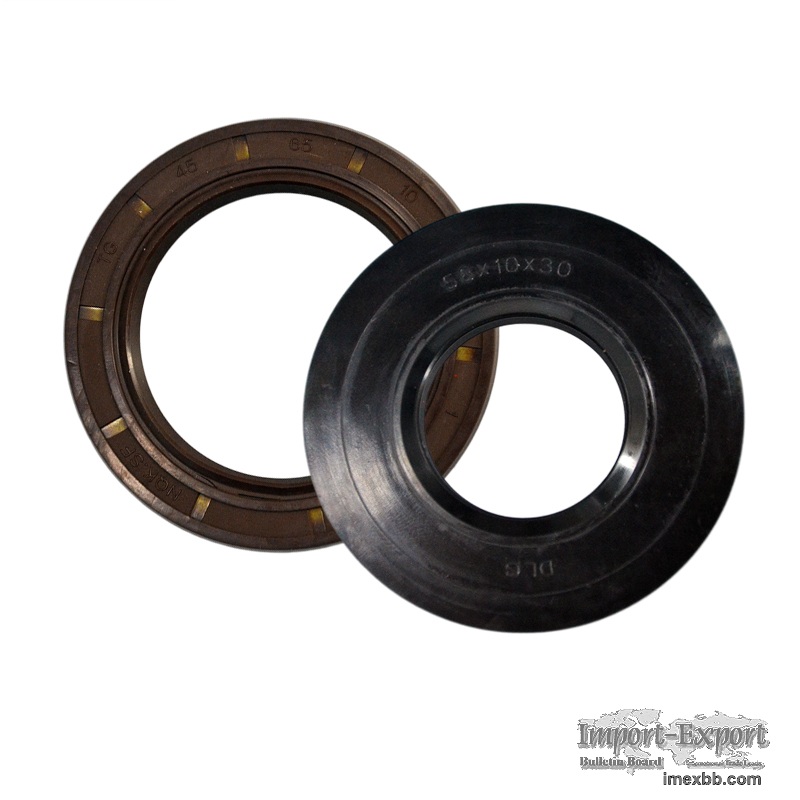 |
 |
Home > Offers to Sell > Others & Excess Inventory > Others
| Contact: | junyingliu |
|---|---|
| Company: | Xingtai Shanfeng special rubber products Co., Ltd |
| Hetou Industrial Zone, Renze District, Xingtai City, Hebei Province | |
| Xingtai City, Hebei | |
| China | |
| Phone: | 18713908608 |
| E-Mail: | |
| Date/Time: | 8/21/24 2:42 GMT |
High Temperature Resistance Shaft Seal with Customizable Sizes Durable Oil
Oil seals are essential components in machinery, playing a crucial role in
preventing fluid leaks and maintaining the efficiency of various mechanical
systems. However, understanding the markings on these seals—comprising
numbers, letters, and letter combinations—can be a challenge for those
unfamiliar with the terminology. These markings are not random; they carry
significant information about the seal's specifications, material, and intended
application. This article explores what these markings represent from multiple
perspectives.
1. Size and Dimensions
The most straightforward information conveyed by the numbers on an oil seal
relates to its size. Typically, these numbers indicate the seal’s dimensions,
including the inner diameter (ID), outer diameter (OD), and width. For example,
a seal marked with "25x47x7" refers to an inner diameter of 25mm, an outer
diameter of 47mm, and a width of 7mm. These measurements are crucial for
ensuring that the seal fits precisely in the intended application, preventing
leaks and ensuring proper functioning.
2. Material Identification
Letters on oil seals often denote the material from which the seal is made.
Common materials include NBR (Nitrile Butadiene Rubber), FKM (Fluororubber),
and PTFE (Polytetrafluoroethylene). These materials are chosen based on their
resistance to heat, chemicals, and wear. For instance, a seal marked with "NBR"
is made from Nitrile, which is known for its resistance to oils and hydraulic
fluids, making it suitable for automotive and industrial applications.
3. Seal Type and Design
Letter combinations often provide insight into the seal’s type or design
features. For example, "TC" refers to a seal with a double lip (the main
sealing lip and a dust lip), often used in environments where contamination is
a concern. Another example is "SC," which refers to a single-lip design. These
designations help users quickly identify the seal that meets the specific
requirements of their application, such as enhanced sealing in dusty
environments or high-pressure conditions.
4. Operational Parameters
In some cases, the markings on oil seals may also include information about
the seal's operational limits, such as its maximum rotational speed or pressure
rating. This is especially important in high-performance applications, where
exceeding these parameters could lead to premature seal failure and potential
damage to the machinery.
The numbers, letters, and letter combinations on oil seals form a code
that, once understood, can significantly simplify the process of selecting the
right seal for a particular application. However, beyond the technical
specifications, these markings also serve as a reminder of the importance of
precision and the need to match the seal with its intended environment. As
technology advances, it’s possible that new codes and combinations will
emerge, offering even more detailed insights into the capabilities of oil
seals. Understanding these markings not only aids in proper seal selection but
also enhances the reliability and longevity of the machinery in which they are
used.
Minimum Order: 500 pieces
SOURCE: Import-Export Bulletin Board (https://www.imexbb.com/)
Similar Products:Not exactly what you are looking for? Post an Offer to Buy!
![]()
© 1996-2010 IMEXBB.com. All rights reserved.
|
|
|






